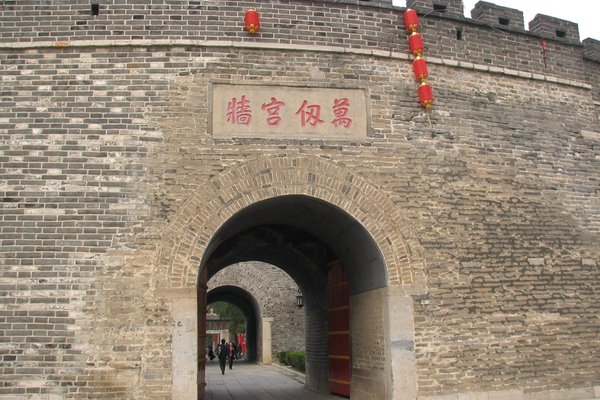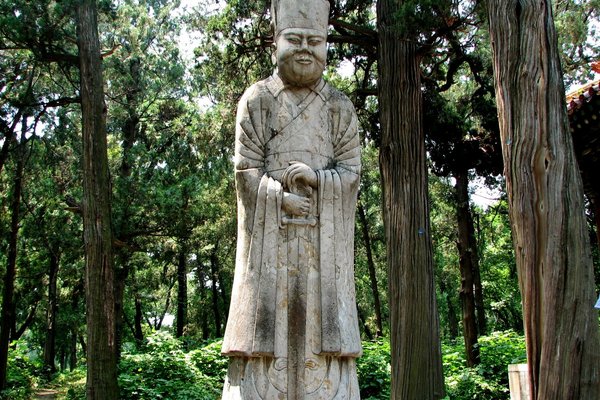China
Temple, Mansion and Cemetery of Confucius
The Temple and Cemetery of Confucius and the Kong Family Mansion in Qufu represent the influence of Confucianism on China and other oriental countries.
The layout and style of the Temple serve as a model for all Confucius temples in Asia. The Cemetery contains Confucius’ tomb and more than 100,000 graves of his descendants, while the Kong Family Mansion was the place where the male direct descendants of Confucius lived and worked. The buildings were strictly designed according to the ideas of Confucianism and built by the finest artists and craftsmen due to the support given by Chinese Emperors.
Community Perspective: A good place if you study Chinese culture or Confucius' philosophy. Mary even stayed overnight in the Kong Family Mansion in 1990.
Site Info
Official Information
- Full Name
- Temple and Cemetery of Confucius, and the Kong Family Mansion in Qufu (ID: 704)
- Country
- China
- Status
-
Inscribed 1994
Site history
History of Temple, Mansion and Cemetery of Confucius
- 1994: Referred
- Bureau - Better info on Buffer Zone
- 1994: Inscribed
- Inscribed
- Type
- Cultural
- Criteria
- i
- iv
- vi
Links
- UNESCO
- whc.unesco.org
All Links
UNESCO.org
- whc.unesco.org — whc.unesco.org/
News Article
- July 20, 2015 economictimes.indiatimes.com — Temple of Confucius gets first facelift in century
Community Information
- Community Category
- Religious structure: Indigenous
Travel Information
Beijing hotspot
Nanjing Hotspot
Recent Connections
-
Thrones
In Confucius Shrine, there is a big imp… -
Beijing hotspot
Trains to Qufu East is 2.5 hours. Publi… -
Nanjing Hotspot
Frequent fast trains to Qufu East in le…
Connections of Temple, Mansion and Cemetery of Confucius
- History
-
-
Historical Events
Place of birth and death of Confucius -
Located in a Former Capital
Located in Qufu which served as the capital of the State of Lu during the Spring and Autumn Period
-
- Architecture
-
-
Chinese Garden
Kong Clan's residence garden, one of the best example of classical garden in chinese nobility house
-
- Damaged
-
-
Iconoclasm
Sledgehammers were used to destory tombs, stele, and statues. "The artifacts of the historical sites at Qufu suffered extensive damage during the Cultural Revolution when about 200 staff members and students of Beijing Normal University led by Tan Houlan (1937-1982), one of the five most powerful student leaders of the Cultural Revolution, came to Qufu and destroyed more than 6000 artifacts in November 1966. The corpse of the duke of Qufu in the 76th was removed from its grave and hung naked from a tree in front of the palace during the desecration of the cemetery in the cultural revolution." - wiki
-
- Religion and Belief
-
-
Holiest place
Confucianism -
Confucianism
Birthplace of Confucianism
-
- Constructions
-
-
Stelae
The Cemetery contains more than 100,000 tombs of the descendants of Confucius, bearing stelae, stone figures, celestial pillars, and other funerary furniture. There are over sixty structures (gates, sacrifice halls, and stele pavilions) for ceremonial and sacrificial use." - AB Document -
Pillars
The Cemetery contains more than 100,000 tombs of the descendants of Confucius, bearing stelae, stone figures, celestial pillars, and other funerary furniture. There are over sixty structures (gates, sacrifice halls, and stele pavilions) for ceremonial and sacrificial use." - AB Document -
Bixi
SeveralSee en.wikipedia.org
-
Thrones
In Confucius Shrine, there is a big imperial throne for Emperor to use when visiting and worshipping Confucius. -
Dynastic Burial Places
Confucius' tomb and the remains of more than 100,000 of his descendants
-
- Timeline
-
-
Built in the 16th century
While numerous tombs date as far back as the Zhou dynasty (1046-256 BC), the current layout and building design of the temple and mansion originate from the Ming Dynasty. "At its apogee in the 16th century the Mansion was made up of 170 buildings with 560 rooms, but only 152 buildings with 480 rooms survive, covering 12,470 m2. Most of the principal buildings date from the Ming Dynasty, with additional structures of the Qing Dynasty." - AB Document "The last major redesign following the fire in 1499 took place shortly after the building of the Forbidden City in the Ming Dynasty, the architecture of the Temple of Confucius resembles that of the Forbidden City in many ways." - Wiki
-
- WHS Hotspots
-
-
Beijing hotspot
Trains to Qufu East is 2.5 hours. Public bus from station to scenic area (30 m). Can even be combined for a long day trip with Taishan -
Nanjing Hotspot
Frequent fast trains to Qufu East in less than 2.5 hours. The site is less than 30 mins bus from the station
-
- WHS Names
-
-
Named after individual people
Confucius 551 BCE ? 479 BCE) was a Chinese thinker and social philosopher
-
News
- economictimes.indiatimes.com 07/20/2015
- Temple of Confucius gets first fac…
Recent Visitors
Visitors of Temple, Mansion and Cemetery of Confucius
- Alejandro Lau
- Alexander Barabanov
- Alexander Lehmann
- Alex Goh
- Alex Marcean
- Ansitong
- Artur Anuszewski
- Atila Ege
- Bernard Joseph Esposo Guerrero
- Bill Koo
- Bin
- Bluewonder310
- Boj
- chenboada
- chenqtao
- Christravelblog
- Csaba Nováczky
- Dimitar Krastev
- Dolemite92
- Dwight Zehuan Xiao
- Els Slots
- Erik Jelinek
- Eva Kisgyorgy
- Fan Yibo
- Fmaiolo@yahoo.com
- Hadrianus
- Helios
- henryjiao18
- heywhatever2
- Iain Jackson
- Jawnbeary
- Jeffrey Chai
- Joel on the Road
- Joyce van Soest
- jxrocky
- KarenBMoore
- Kasper
- Kevin McFarland
- Knut
- Kristin
- Kyle Magnuson
- Lazerway
- lichia
- Lillybett
- Luke LOU
- Maciej Gil
- Matthewsharris
- MaYumin
- Miloš Tašković
- Ming_9734
- Mo-han Je
- Morodhi
- nan
- Patrik
- Pchxiao
- Petteri
- Remski
- Reza
- Risson
- Sergio Arjona
- Shandos Cleaver
- Solivagant
- Ssong.x
- Szucs Tamas
- Taotao Chen
- Thomas Buechler
- Tourb
- trekkie900
- Velvetlapis
- Vincent Cheung
- Walter
- wantrain.
- Weecheng
- Xiquinho Silva
- Yang Chengyu
- Yongcheng Liu
- Zhenjun Liu
- Zoë Sheng
- Zos M
Community Reviews
Show full reviewsAnonymous
Temple, Mansion and Cemetery of Confucius
Temple, Mansion and Cemetery of Confucius (Inscribed)
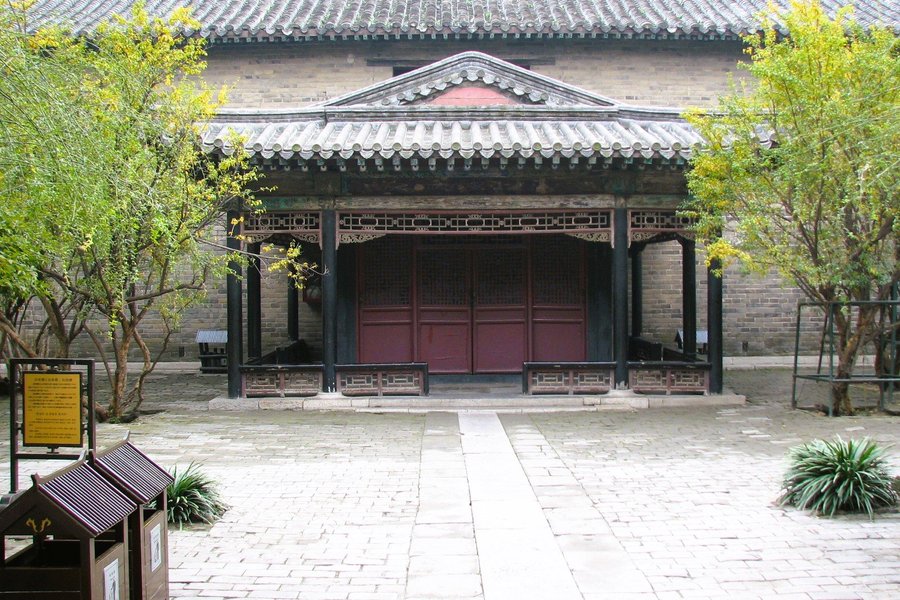
What did I think of this WHS? It's very interesting if you are into the history of Confucius and maybe Mencius (just 30 minute by taxi away). Even the birthplace of the Yellow Emperor and the tomb of his son are in current QuFu.
I went to Qufu from Xuzhou unline most people arriving from Jinan. This is the same time by train. I took the taxi to the cemetary first and walked there for about 90 minutes in the morning. nice fresh air, quiet. Beautiful area with autumn leaves. (i was there in early November 2015). Then I took an unofficial taxi to the temple and mansion. You can walk it, but it was drizzling...
The temple and mansion are nice to see but not for a first timer in China.
For die hards, the Mencius temple is smaller and less interesting. I did go, just to go and see it. But I would not recommend to most visitors.
Qufu is however a great place if you are traveling the Beijing-Shanghai railway. A nice stop here for a night is worth it.
Photos please see the link below.
Keep reading 0 comments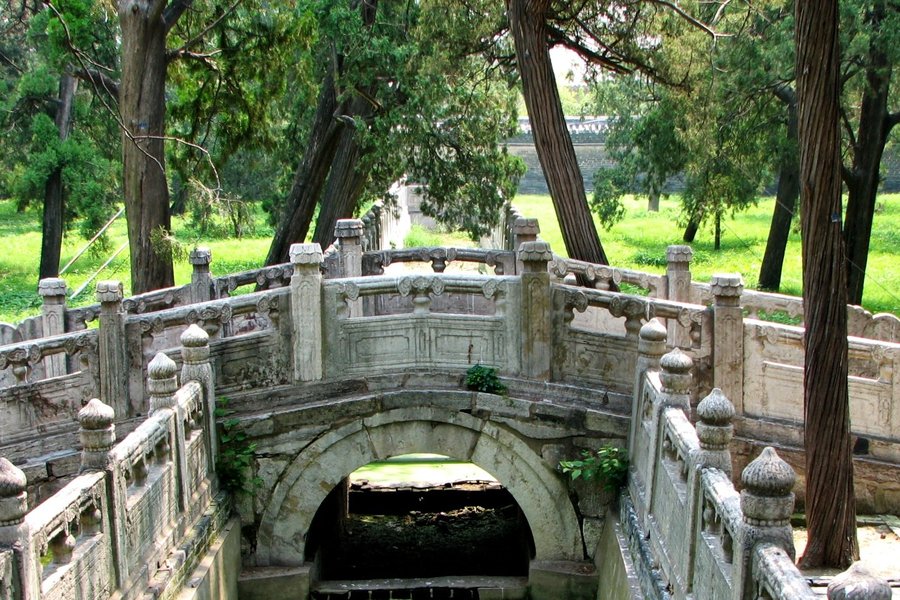
Qufu is a quaint town. While this small city is fairly off the tourist map, the Family Mansion of Confucius can get crowded (like most WHS in China). Luckily, my Chinese friend who I was travelling with at the time, hasd family in Ti'an, close to Qufu. Thus with an early start we made our way to Qufu to visit the temple and family mansion Confucius and his many descendants.
The complex itself is full of classic Chinese motifs. If you have already visited many Chinese style homes or palaces, it might loose some of its draw. However, I found it fascinating, the veneration of this family from the time of Confucius, lasting until the Qing dynasty (77 generations!). The courtyards are spacious, lined with trees. The buildings are decorated, in some occasions, in the same style only reserved for the Emperor.
Like others have mentioned, some of the stonework, such as exquisite pillars are worth taking note of. For those who want solitude and space from the tour groups, take a stroll in the cemetery. In these burial grounds you will find countless tombs of the Kong family. Deep into the cemetery you will find the tomb of Confucius himself. There is the incredible (stated fact) that this cemetery contains the burial remains of more than 100,000 of his descendants! Hyperbole? While the tomb itself is far more recently built than the 5th century BC, it is a great place for reflection and people watching. Its not uncommon to …
Keep reading 0 commentsIvan ManDy
Temple, Mansion and Cemetery of Confucius
Temple, Mansion and Cemetery of Confucius (Inscribed)
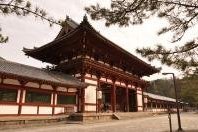
We were lucky to have a very accommodating and knowledgeable guide (a big plus being able to speak our language) which is perhaps why I really appreciated this place.The whole complex is really a tribute to Confucius and his (priviledged) descendants who were lavished upon by the succeeding imperial rulers just because of their familial links to the great sage himself. Being of Chinese ancestry, standing in front of 'supposed' grave of this philosopher really strikes you to the core and makes you remember all the things which you learned from school
Keep reading 0 commentsAnonymous
Temple, Mansion and Cemetery of Confucius
Temple, Mansion and Cemetery of Confucius (Inscribed)

I traveled from America in 2009 with 15 educators to study Confucius. Qufu is almost a holy spot for the sage. Climbing Mt. Tai and seeing Chinese tourists visit this place made us realize how Confucius' philosophy still has a strong hold on the modern Chinese. This is a country of very strong contrasts. Farm houses with solar panels, old men on cell phones (they skipped the phone infrastructure). If you are a tourist coming for cheap pearls don't bother coming here. If you are a person who is truly interested in learning about another culture (in Qufu women pedal cabs and make $3 a day) then this is a place you should visit, after Shanghai or Beijing.
Keep reading 0 commentsEls Slots
Temple, Mansion and Cemetery of Confucius
Temple, Mansion and Cemetery of Confucius (Inscribed)

Getting to the little town of Qufu is quite a trek into the countryside for what is only a mildly interesting WHS. Visiting is pretty organized here, like the temple, family mansion and cemetery of Confucius are conveniently lined up after each other and share one entry ticket. I decided to go my own way, and started in the middle (at the mansion) and skipped the cemetery.
The grounds of the temple and mansion are full of 'Chinese things'. I bought a booklet about those traditional Chinese culture items a few weeks ago, and could tick off quite a number here: door studs, scenic openings (jingdong), stone turtles burdened with stone tablets, zoomorphic ornaments, glazed tiles and a strange ornament that might be Taihu rockery.
The best sight of them all is at the rear of the Confucian Temple. The 18th-century Dacheng Hall has ten wonderfully decorated columns, ornamented with dragons.
Although I do not contest its place on the World Heritage List (it certainly has invaluable historic value for northeast Asia), there's not much here that can't be seen elsewhere in China. I can only recommend a visit for those with plenty of time on their hands or studying Chinese culture.
Keep reading 0 commentsAnonymous
Temple, Mansion and Cemetery of Confucius
Temple, Mansion and Cemetery of Confucius (Inscribed)

For anyone coming from the West, this would be a place of little interest, except s/he has stong interest in Oriental culture. Confucious, arch-man of the Kong Family, is an anicent philosophy who contributed tremendeously to the Chinese culture, evening including cultures of Korea & Japan. That's the tip!
Little to do with Communist.
Keep reading 0 commentsAnonymous
Temple, Mansion and Cemetery of Confucius
Temple, Mansion and Cemetery of Confucius (Inscribed)

I and a friend stayed at the Kong Famly Mansion in 1990, when it was a reasonably-priced hotel for foreigners. We were two American women, surrounded by Japanese men visiting then for the Confucius Ceremony. We were travelling independently, using the LET'S GO series book, and it told us to go there. We needed no special permission. I remember distinctly how yellow the water was in the bathtub when it came out, and we decided against having a bath. The foot-high room dividers were a major problem because we also climbed up Mount Tai, slept overnight there, then hiked back down the trails on its opposite, well, back side. We could barely move our legs at all!!! The Japanese just laughed at our stiff, awkward attempts to get over these dividers. I still wonder what the point of such divisions between the rooms was.
We were lucky to find a busload of Canadian seniors, to join them for two days of meals and sightseeing, and also to attend the Confucian festival with them. We saw the ancient dancing, and we visited a carpet-making village (girls and women in dim, dusty rooms weaving by hand...)
Qufu was packed with visitors. Mount Tai was quiet in terms of foreigners... we were the only ones climbing up.
I am happy that we did it then, when I see that it is now a museum. No mention of what happened to the Kong family? Murdered by the Communists? Fled? Flied?
Keep reading 0 comments
